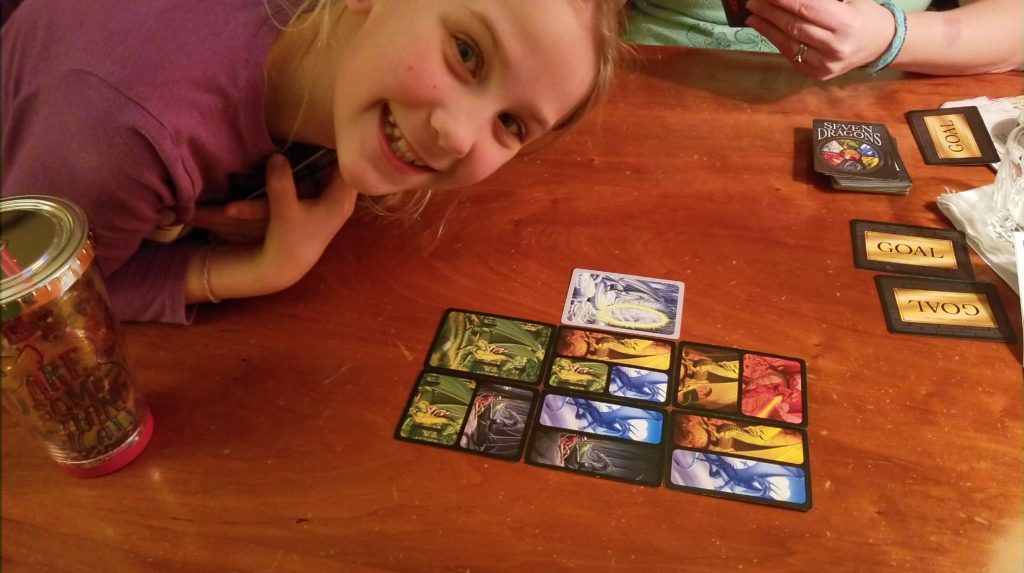
Seven Dragons has been a staple among our games for several years now. It’s easy to learn and with it being just a deck of cards and being pretty quick to play, we often grab it when visiting family or friends to have on hand in case someone gets an itch to play something quick and easy.
Each player is assigned a private goal colour and given a small hand of cards from a communal deck, which you draw from each turn and can gain extra cards from depending on how you play your cards.
The cards have various combinations and sizes of dragon images on them, in each of five colours. The idea is to connect seven of your goal colour dragon images together in any direction or mass that you can, provided the colours are all touching each other.
Action cards are thrown into the mix to add some twists to gameplay, including moving cards that were already played, trading hands, trading goals, etc., which can all completely change what players are trying for what goal colour right up to the end of the game.
Part of the reason we’ve been playing it for so long is that there’s a play variation for younger kids: Rather than trying to get seven of the same dragon colours touching, they only need to get a connected number up to their age (meaning, at five, the kid only has to get five of her goal colour connected, and six, she needs six of her goal dragons touching, etc.) Which makes it much easier for kids to win, at ages when their not winning can really put a damper on the whole evening.
It’s a fun, easy, quick game for all ages.
The second game we played as a bit of a wind-down toward the kiddo’s bedtime was standard Go Fish, which we made more fun by throwing in French and Danish as we played. (For the record, Fisk–“Feesk”–is “Go fish” in Danish. Using it did, indeed, make the game better.)